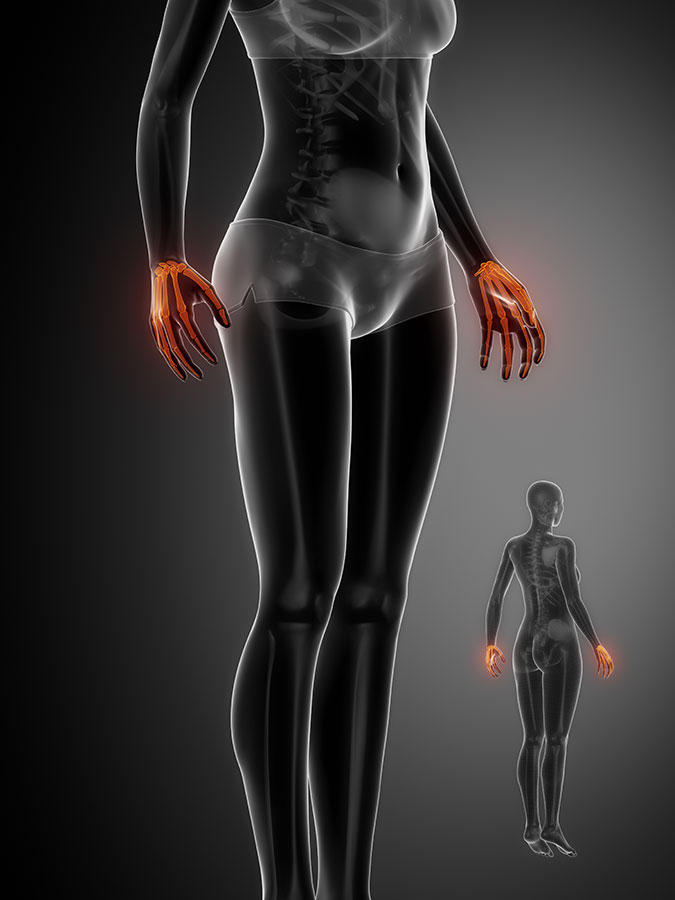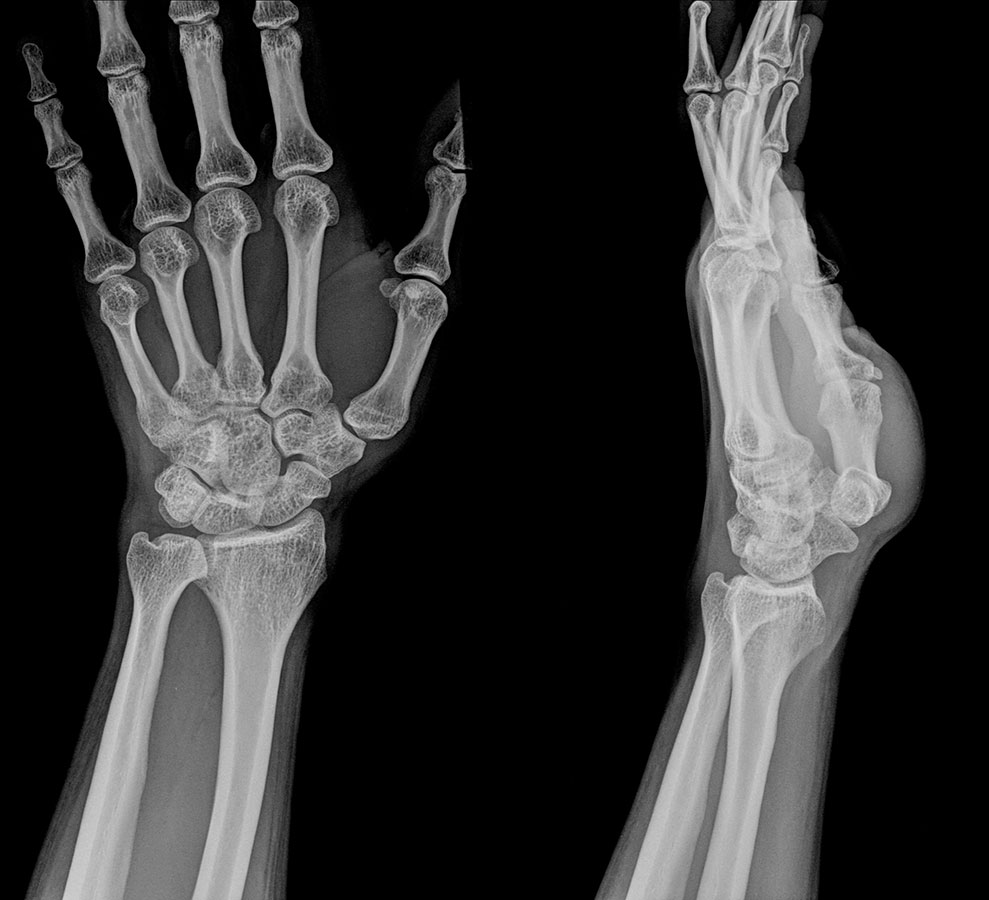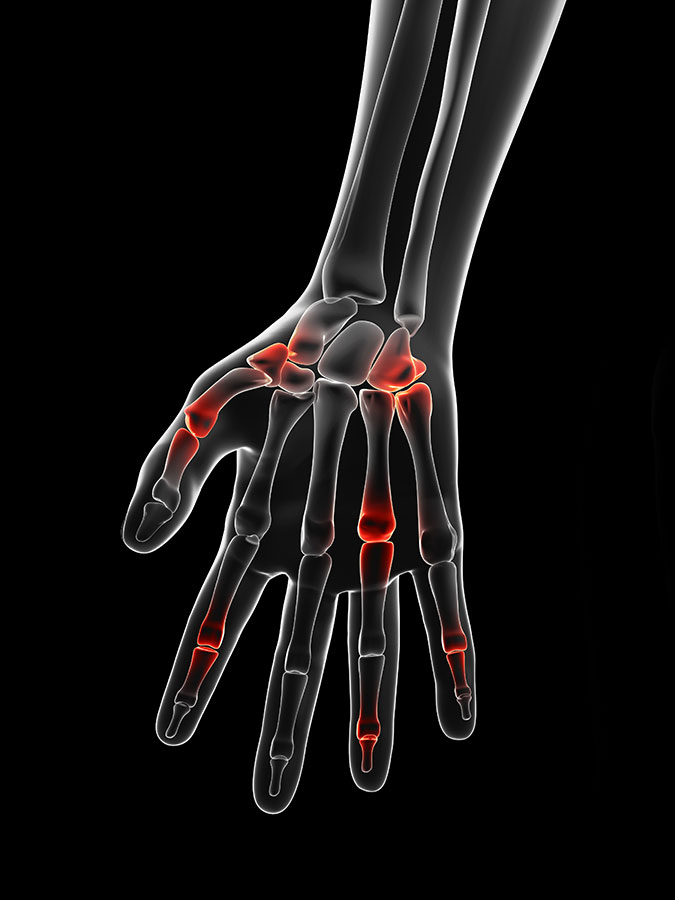The hand is a very complex structure and some medical practitioners only specialize in treating hand injuries. Hand pain can be described as any pain extending from your wrist to the base of your fingers, and for this purpose be divided between the palm and the back of your hand. To establish where exactly your hand pain is coming from it can be very helpful identifying what structure is causing your pain. Hand pain is our field of specialty, we are the experts. Your hand is complex due to its small size, and close proximity of these small structures.
Any pain or problem in your hand will have a ripple effect on the fingers, wrist and elbow. So if you are uncertain what the cause may be, rather let us have a look at it before you cause even more problems. Hand pain can be caused by any of the muscles, joints, tendons or nerves in your hand, so let’s look at each of these anatomical structures, and how hand pain and other problems may arise:
There are only a few small muscles in the hand that bridge the spaces between the bones called the Metacarpal bones. These muscles are the Intrinsic muscles which are mainly responsible to bring the metacarpal bones together like making a tight fist as well as opening the ‘web spaces’ between these bones.
Lumbricals are mainly on the palm side of the hand and the Interosseous muscles on the back of your hand. These muscles are the first to get strained with repetitive punching, or they can be cut through when a pole or knife is driven through the web spaces between the metacarpals.
Tendon pain
On the palm side of the hand there are two groups of rope-like tendons that run across the hand from the forearm to your fingertips. The Flexor Digitorum Superficialis, and Flexor Digitorum Profundus, that gives you the ability to close your fingers into a fist. On the back of your hand we have the Extensor Digitorum Communis that allows you to open your hand.
These tendons gets cut by either glass or a knife. The Flexor group on the palm side of the hand is more prone to injury. An example is washing dishes and the glass breaks in your hand. Defending yourself against an knife attack, or even trying to catch a falling sharp object.
There are three branches of nerves that supply the power and feeling to your hand. The Median nerve supplies the Thumb, Index and middle finger. The Ulnar nerve supplies Ring and Little finger. The Radial nerve gives feeling to the back of your hand and Thumb.
Nerve pain in the hand is caused by damage or disease that affects the power cables of the hand. These power cables control all your hand’s movement and communication such as feeling to the skin and muscles, this includes touch, temperature and a variety of other feelings.
Hand pain due to nerve injury may cause you to feel: Pins & needles, numbness, burning tingling, weakness, electrical shock traveling from the palm of the hand to the finger. There are numerous ways in which the nerves may be injured, compressed or irritated. Click the link for a more in depth discussion.
Carpal tunnel syndrome is a frequent problem patients consult us about. This is when the Median nerve is compressed at the base of the hand and wrist.
One of the most common signs of damage to these nerve is a deformity called “ the Claw”, where the fingers and hands stays in a contracted position and unable to willingly move your hand or fingers.
There are two sets of joints in the hand, the one group connects to your wrist and the others form your knuckles of your fist. The Metacarpal bones connect to the Carpal bones (wrist side) forming the Carpometacarpal Joints(MPJ) at the base of your hand. On the other side, your fingers connect to the first phalanx called the Proximal Phalanx to form the Metacarpal Phalangeal Joints (MPJ).
Arthritis is the most common cause of hand pain in these joints. The Metacarpophalangeal joints are more vulnerable to dislocate due to the relative instability of the fingers connecting to the hand at this point.

There are 4 tightly arranged long bones in the hand called the Metacarpal bones, that fits parallel next to each other. These Metacarpal bones may fracture at high force or impact like when boxing, hitting a wall, or falling with your hand on a rock.
‘Boxer’s fracture” Hence the name, is a fracture of the 5th Metacarpal bone (Below the Little finger) The forces during a punch concentrate on the outside of the fist, and absorbs most of the impact, therefore its the first to crack, break and fracture.
Repetitive stress on the Metacarpal bones may cause the outer edge of the bone to crack that leads to a stress fracture in your hand.


Causes of hand pain
The most common cause would be constant irritation to the tendons running to the palm of the hand. We spend hours in front of computers and gripping our steering wheel. Irritation to the tendons running from the forearm to the hand can easily get irritated and inflamed. A tendinitis is caused by this irritation. When making a fist, a burning pain will be felt over that tendon. In most cases, the tendon as well as its corresponding muscle (in the forearm) needs to be treated to relieve the pain. We use our hands every single day and we cannot afford not to use them. Your productivity depends on it.
Direct injury from a specific fall can easily crack or separate the bones in the hand and wrist with very little force. This pain you will feel with certain movements of the fingers and swelling (or even bleeding) might be present.
Our professional experience with hand pain
We depend on our hands to do our work, the biggest concern among patients are the time it will take to heal. This question can only be answered after full investigation and assessment of all the structures in the hand is done. Muscles and ligaments heal much faster than the joint or cracks in the small bones of the hand.
Most fractures, ligament sprains and joint dislocations react very well to treatment, but you must call upon expert advice to guide you through the process.
Most common hand injuries we treat:
- Carpal tunnel syndrome
- Extensor digitorum tendinitis
- Flexor digitorum tendinitis
- Metacarpal fractures
- Fractures of the bones in the hand
- Proximal Metacarpal phalangeal joint dislocations
Symptoms of hand pain
Mild symptoms
- Wrist & hand movement are painful
- Gripping causes pain
- Pain turning door knobs or opening jars & bottles
- Tenderness when putting weight on hands
- More stiffness in the morning
- Pain that eases with activity
Moderate symptoms
- Unable to bend or straighten a finger
- Sharp pain when moving against resistance
- Pain lifting/carrying
- Stiffness due to swelling (unable to make a fist)
- Burning pain even when not moving
Types of wrist pain & structures they may relate to
Muscle pain in hand
- Pain gets worse during activity
- Burning or cramp like pain
- Stiffness and tightness
- Dull pain when stretched
- Pain only at the end of range
- No loss of muscle strength
- Able to move your wrist through the full range of movement
- Little swelling
Joint pain in hand
- Sharp sudden pain
- Worse when moving as compared to static positions
- Pain when doing a specific moment
- Muscle tightness surrounding sharp pain
- Deep pulling feeling when stretched/ moved
- With or without swelling
- Pinching feeling at end of range
- Unable to pinpoint it to one specific spot
- Dull ache over a large area
- Unable to find a pain-free position

